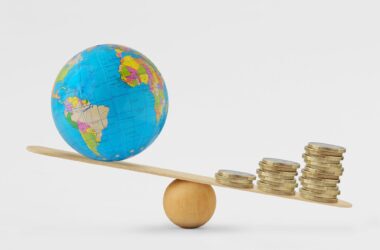The specter of counterfeit drugs lurks within the pharmaceutical industry, posing a substantial threat to patient safety and public health. These illicit products, disguised as legitimate drugs, can contain incorrect or harmful ingredients and lack active ingredients, leading to a range of undesired, often fatal, consequences. Fortunately, the pharmaceutical industry is leveraging emerging blockchain technology in the supply chain to combat this global issue.
This blog explores the complexities of counterfeit drugs, their escalating prevalence, the associated risks, and the comprehensive strategies—as an answer to how to stop counterfeit drugs.
Demystifying Counterfeit Drugs
Counterfeit drugs contain a broad range of fraudulent products. Some may be complete imitations without active pharmaceutical ingredients (APIs). And others might contain inaccurate dosages, making them ineffective or potentially toxic. While the rest could be substandard versions of original drugs, using low-quality ingredients that compromise their efficacy and safety.
The production and distribution of counterfeit drugs often operate in the shadows. Criminal networks exploit lax regulations in certain regions, setting up covert laboratories with minimal quality control. Typical examples are online pharmacies and illegal street markets, which are common avenues for peddling these detrimental fakes.
Here’s what is new on counterfeit drugs:
Springer Nature reports that around 10% of antimicrobials for humans in low—and middle-income countries are estimated to be substandard or falsified.
According to a report by Statista, the increase in online pharmacies is cited as one reason for the rise of fake or defective pharmaceuticals.
The Devastating Impact Of Counterfeit Drugs
The ramifications of counterfeit drugs extend far beyond individual patients; instead, it affects the entire pharma industry. Here’s a closer look at the multifaceted impact:
Endangering Human Lives: When patients unknowingly consume counterfeit medications, they are exposed to a range of potential health risks. These can include adverse reactions, antibiotic resistance due to inefficient treatments, and even result in fatality.
Eroding Public Trust: Increased counterfeit drugs corrupt public trust in legitimate pharma companies and healthcare systems. Patients become reluctant to seek treatment, potentially delaying diagnosis and optimal care.
Economic Burden: Counterfeiting negatively affects legitimate pharmaceutical companies, lessening revenue and impeding research and development of new life-saving drugs. In addition, healthcare systems struggle with the increased costs linked with treating patients who have suffered damaging effects from consuming counterfeit medications.
Increased Healthcare Costs: Counterfeit drugs increase healthcare costs and harm patients, who may experience adverse effects or ineffective treatment. This leads to prolonged illnesses, hospitalizations, and additional medical expenses, placing a burden on healthcare systems and affecting overall healthcare expenditures.
In this line, certain medications, such as antimalarials, antibiotics, antivirals, and drugs for chronic conditions like diabetes and cardiovascular diseases, are known to be more vulnerable to counterfeiting. It is unlikely that counterfeiters would focus on high-demand medications to maximize their profits.
Combating Counterfeiting In The Pharmaceutical Industry
Fortunately, stakeholders across the pharmaceutical landscape are actively collaborating to fight counterfeiting and streamline their supply chain management. We’re outlining some commonly found but effective strategies in this area:
Strengthening Regulations: Regulatory bodies are enforcing rigid guidelines for drug manufacturing, distribution, and record-keeping. Global cooperation is crucial in this effort, ensuring multinational consistency in anti-counterfeiting measures.
Harnessing Technology: Technological advancements are playing an instrumental role in combating counterfeiting. Serialization, a process that assigns unique identifiers to individual drug packages, enables track-and-trace functionalities. This allows for real-time monitoring of a drug’s journey throughout the supply chain, identifying potential discrepancies and disruptions. Blockchain technology, with its immutable record-keeping capabilities, also holds promise in enhancing supply chain transparency and drug authentication.
Consumer Education: Empowering patients with knowledge is a crucial step in the fight against counterfeiting. Educational initiatives can assist individuals in identifying genuine sources of medication, spotting the warning signs of counterfeit drugs (such as unusual packaging and spelling errors on labels), and reporting suspicious online pharmacies to the authorities.
The Evolving Landscape Of Anti-Counterfeiting Efforts
The efforts to find answers to how to stop counterfeit drugs is a relentless marathon, demanding constant innovation and adaptation. On the horizon, exciting new technologies are poised to revolutionize anti-counterfeiting efforts.
One such force is the rise of Artificial Intelligence (AI). These powerful systems can analyze vast datasets, searching for patterns and anomalies that might indicate counterfeit operations. Imagine AI sifting through financial transactions, shipping records, and online chatter, flagging suspicious activity that could lead to the dismantling of counterfeit drug networks. This newfound intelligence empowers regulatory bodies and law enforcement agencies to become proactive, disrupting counterfeiting rings before they can endanger patients.
Another promising development is digital watermarking. This technology involves embedding invisible codes within pharmaceutical packaging, codes only detectable with specialized equipment. These hidden identifiers act as a digital fingerprint for each drug, allowing for seamless authentication throughout the supply chain. Counterfeiters face a new hurdle, as replicating these complex watermarks becomes a near-impossible feat. As a result, digital watermarking disincentivizes counterfeiting attempts, further safeguarding the integrity of the pharmaceutical supply chain.
With these advancements on the horizon, the future of anti-counterfeiting efforts appears brighter. AI and digital watermarking, alongside other emerging technologies, hold immense potential to create a more secure pharmaceutical landscape where patients can have unwavering trust in the authenticity and efficacy of their medications.
Going Forward: A Collective Responsibility Is Needed To Safeguard Public Health
The fight against counterfeit drugs demands a collective effort. In this line, pharmaceutical companies, regulatory bodies, law enforcement agencies, and technology providers must collaborate to develop and deploy robust anti-counterfeiting measures. It is equally imperative to educate consumers about the risks and empower them to make informed choices.
By remaining vigilant, embracing innovation, and promoting global collaboration, we can create a safer pharmaceutical landscape in which patients have unwavering confidence in the authenticity and efficacy of the drugs they rely on.
[Relatable Read: Robust Supply Chain Management For Equitable Healthcare]











